One of the simplest and most intuitive definitions of organic architecture is that it aims to design buildings that are in harmony with nature and their surroundings.
You hear the word ‘organic’ quite a lot these days, usually from people trying to sell you something (or from those annoying friends who shop at Whole Foods and can’t shut up about it). Architecture also uses the term. Thankfully, it doesn’t have anything to do with pesticides or fertilizers — but everything to do with function and form.

Image via Wikimedia.
The term ‘organic architecture’ has been in use for quite some time, it was probably brought to the public’s attention by American architect Frank Lloyd Wright and his spectacular works. It refers to a particular way of designing that strives to balance a space’s or building’s function and its environment, follow natural forms, and seamlessly merge buildings with their surroundings.
The style isn’t limited to playing with shapes. Organic architecture often uses local materials for the building itself and furnishings and works to include the exterior area in the design process to create a unified whole. Like an organism, such structures are meant to take materials from their environment, grow in it, and finally become a part of it.
Along with brutalism — which is in many regards its diametral opposite — it is my favorite architectural school. Since I’m the guy in charge of the keyboard and there’s nothing you can do to stop me, strap in and let’s take a small detour into the world of organic architecture.
Wright’s Principles
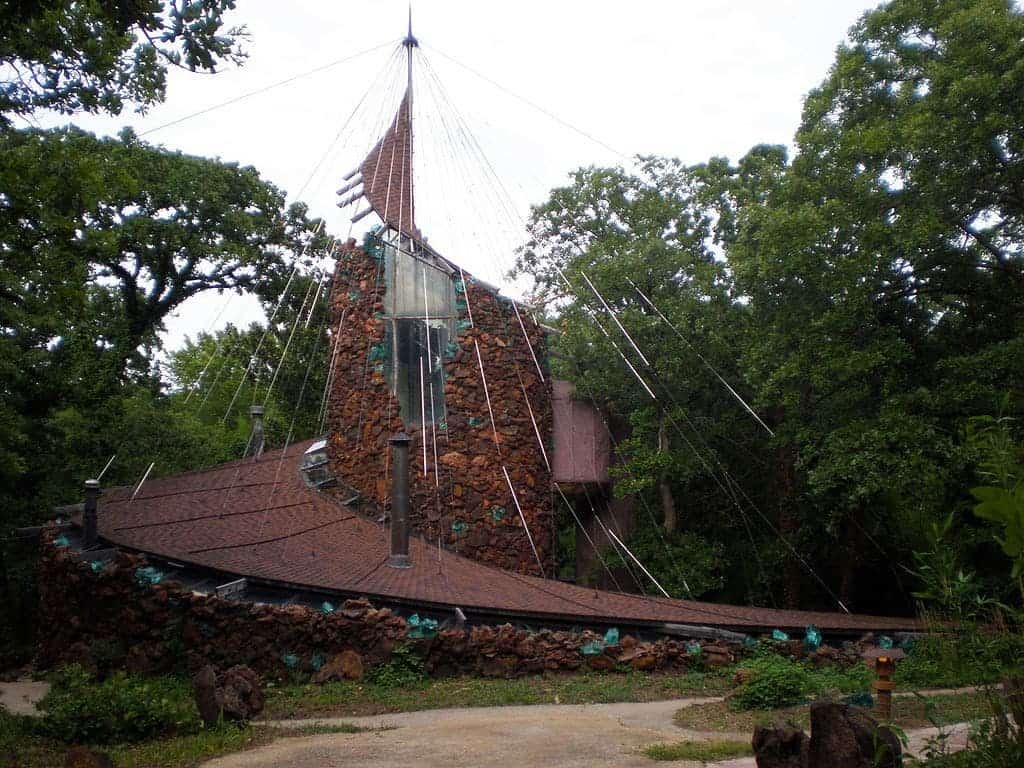
Image via Wikimedia.
Wright is perhaps most responsible for turning organic architecture from a quirky rarity into a full-blown style. Over the course of his career (which started around the 1880s,) he developed a group of principles that he described as “solidly basic to my sense and practice of architecture,” which he adhered to in his work. While not exactly a ruleset, some later architects were very eager to adopt them and develop on the style. As such, they’re a pretty reliable summary of the philosophy that underlies organic architecture. As per the website of the Meyer May House, designed by Wright, they are:
- Shelter — the fundamental role of a building is to provide shelter. Wright, however, “saw a building primarily not as a cave, but as shelter in the open,” and guided his designs toward this goal.
- Kinship of Building to the Ground — best summed up by Wright as “make the building belong to the ground”, make it fit into its environment.
- Interpretation — that the “space outside becomes a natural part of space within the building”.
- Addendum — because of the integration between outside and inside spaces, these buildings are “profoundly natural” and “never dull or monotonous”.
- Form — “Arrangements for human occupation in comfort may be so well aimed that spaciousness becomes economical as well as beautiful, appearing where it was never before thought to exist.”
- Space — Wright saw homes as both useful implements and works of art, adding that their “intrinsic beauty [makes them] more a home than ever”.
- Tenuity and Continuity — this principle advocates for the elimination of “any constructed feature such as any fixture or appliance whatsoever,” and continuity between shapes — in essence, that the design be kept simple with shapes that grow out of and build on one another seamlessly.
- Materials — this principle doesn’t advocate for specific materials, but it does ask that those materials stay true to themselves, in a sense; “wood and plaster will be content to and will look, as well, as wood and plaster,” Wright hold adding that “they will not aspire to be treated to resemble marble”.
- Decentralization — Wright believed that “the natural place for the beautiful tall building – not in its present form but in its new sense – is in the country, not the city”.
- Character is Natural — while a building’s design should follow its function, it shouldn’t focus solely on efficiency.
If they sound a bit abstract, worry not — I had a difficult time understanding what these principles meant until I actually saw them in action. Let’s take a look at some of the more famous organic architecture buildings out there, then.
Fallingwater — Frank Lloyd Wright
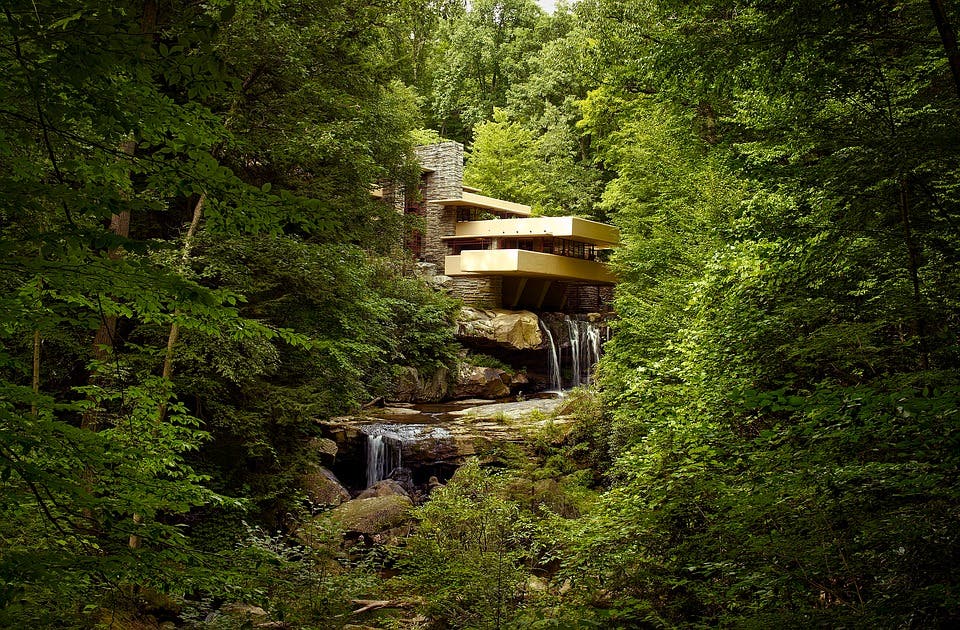
Image via Pixabay.
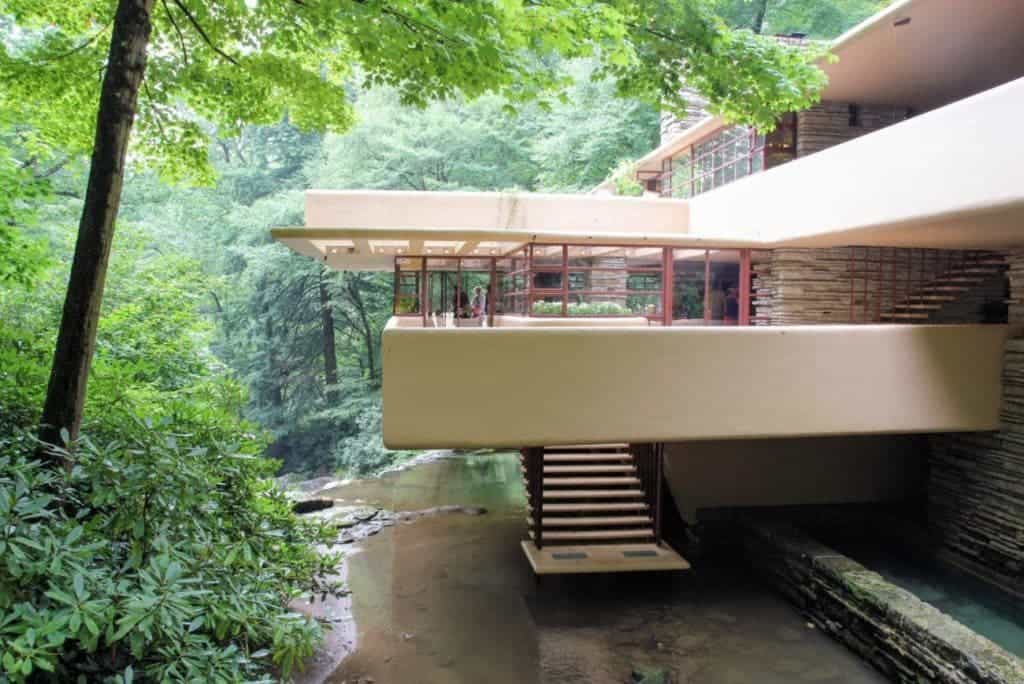
The Fallingwater house was designed by Wright in 1935 as a private weekend getaway for American businessman and philanthropist Edgar Kaufmann, Sr. In 1963, his son Edgar Kaufmann Jr. entrusted both the house and the 1,500 of land that made up the property to the Western Pennsylvania Conservancy. He saw the house as a place where people can come and experience the beauty of architecture, art, and nature, or a place of study.
The Fallingwater Institute remains true to that vision even today, creating a setting for learning through classes, workshops, and residencies at the house.
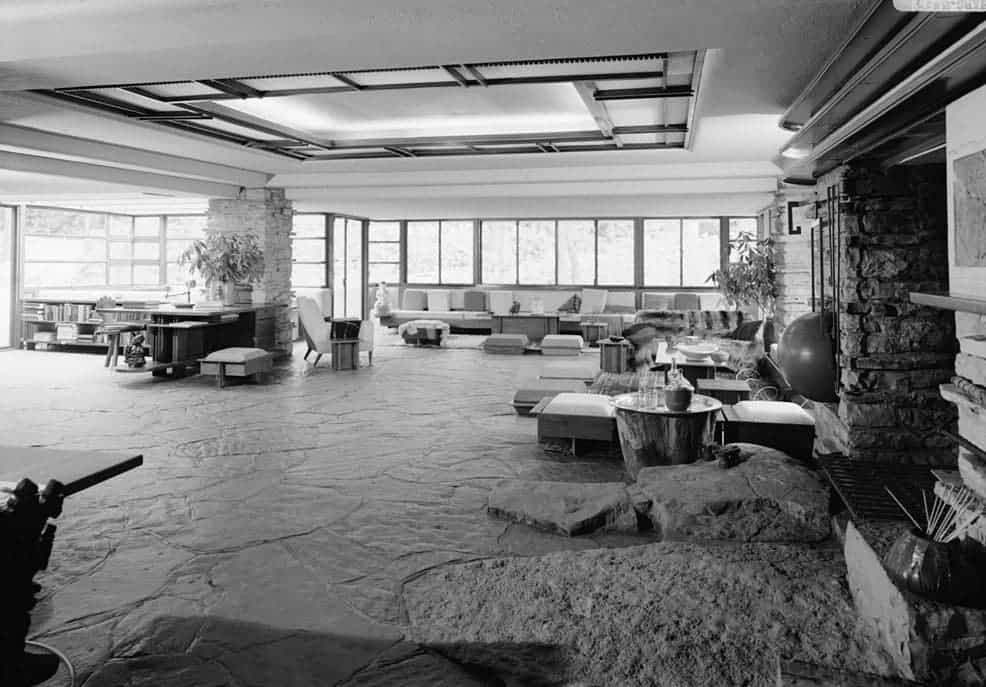
Image credits Jack E Boucher / Historic American Buildings Survey / Library of Congress.
Fallingwater embodies the design philosophies of Mr. Wright and is often seen as one of his masterpieces. It’s also the first of his works that I learned about, but it’s not my favorite one on this list. Currently, the house is listed as a UNESCO Cultural World Heritage site.
The Lotus Temple — Fariborz Sahba


Designed by Iranian-Canadian architect Fariborz Sahba in 1986, the temple was inspired by a lotus flower. It’s an actual temple, which sees actual worship right now — in fact, being a temple of the Baháʼí faith, which accepts all current religions as valid, it’s open to everyone, no matter their beliefs or creed.
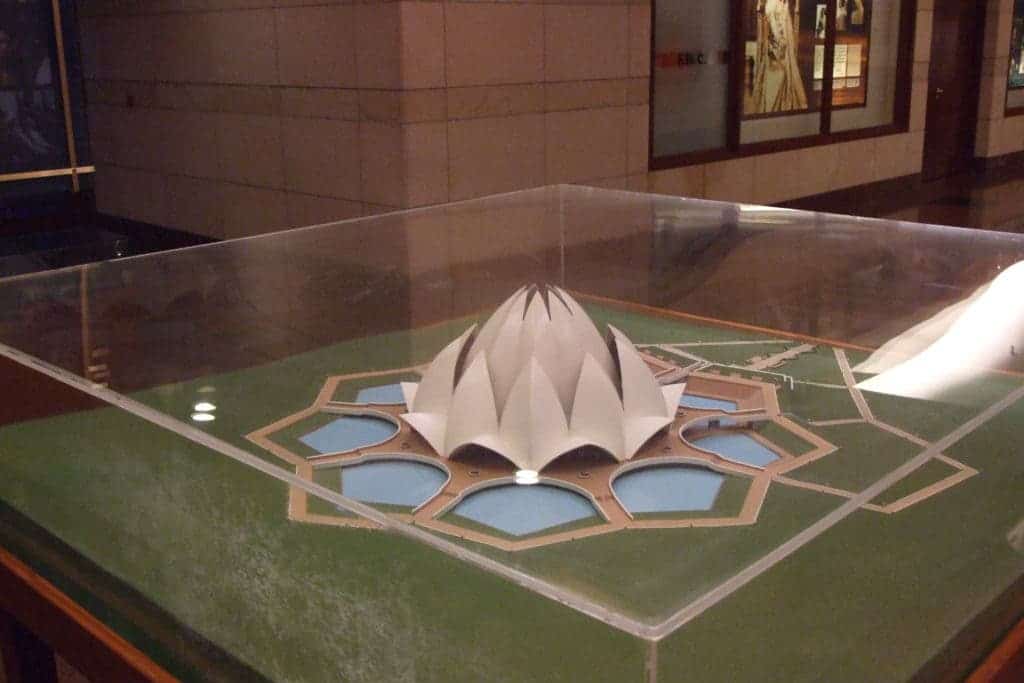
Image via Wikimedia.
Casa Mila — Antoni Gaudi
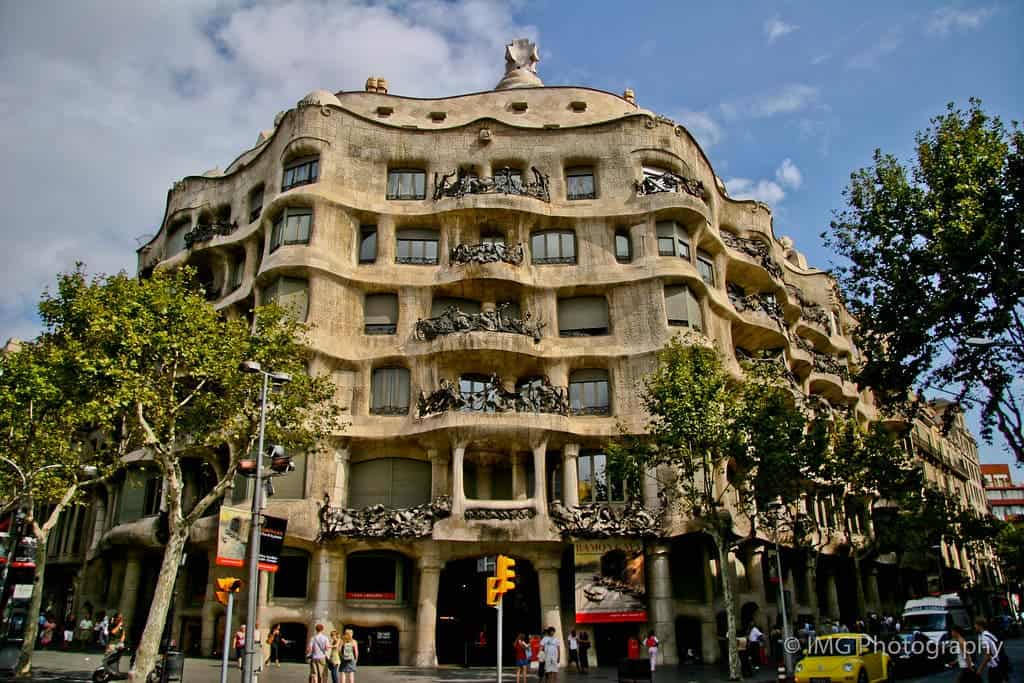
Image credits Ian Gampon / Flickr.
Casa Milà (also known as La Pedrera or “The stone quarry”), built in Barcelona, Spain, was designed by Catalan architect Antoni Gaudi between 1905 and 1910. The more astute among you might have observed that there’s something unusual about this building — it’s quite wobbly.
The design is dominated by honeycomb sections and a rippled exterior and was very controversial in its early days. The city of Barcelona actually required the demolition of certain portions of the building during construction (as they exceeded allowed heights at the time) and beefed-up building codes in response to this structure. Gaudi envisioned the building as a spiritual place (he was a devout Catholic), but in the end built it for a wealthy couple returning from the US. Today, however, Casa Mila is held in high regard by locals and serves as an apartment building.
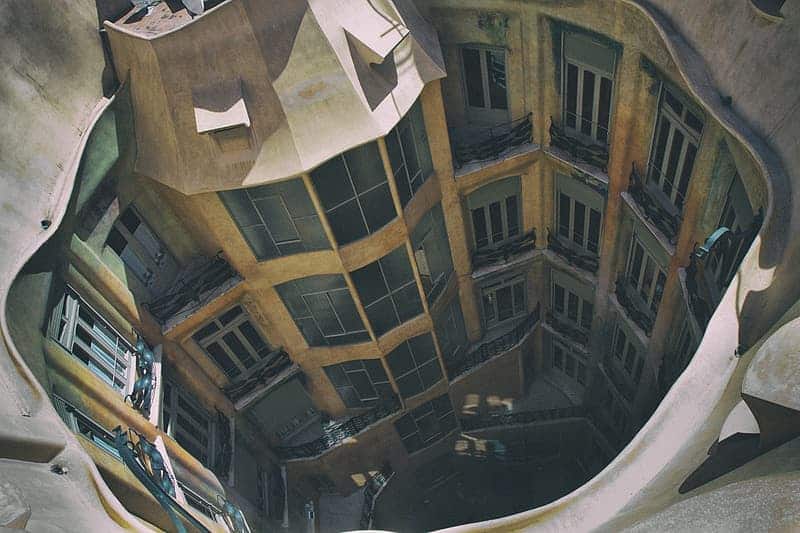
Image via Pikrepo.

Image via Wikimedia.
Casa Mila is a UNESCO Cultural World Heritage site.
Taliesin West — Frank Lloyd Wright
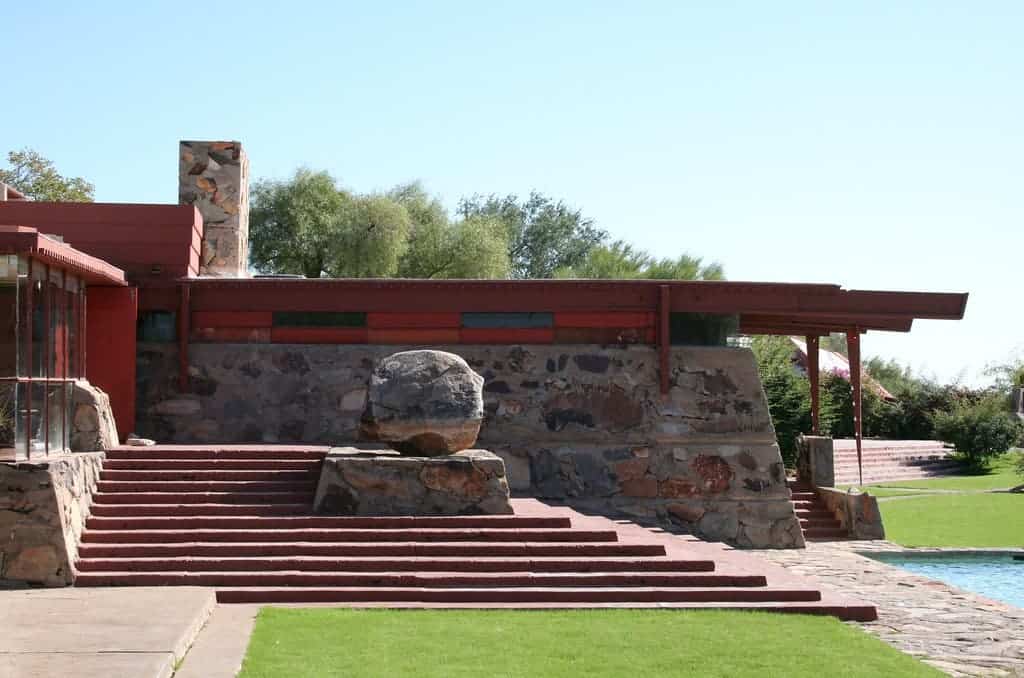
Image credits Artotem / Flickr.
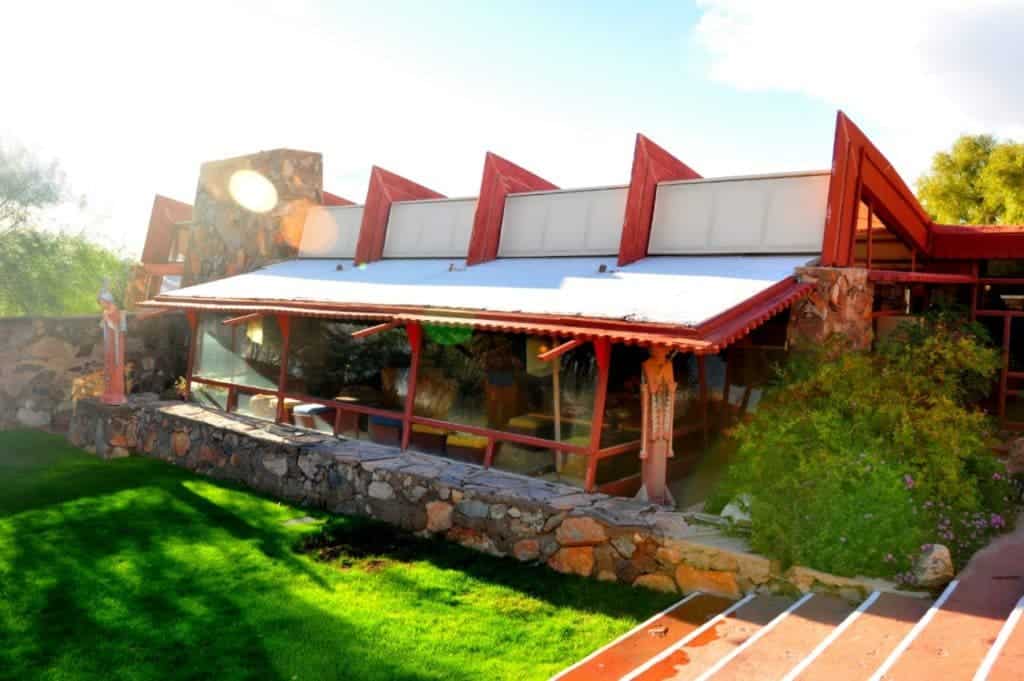
Image via Wikimedia.
Taliesin West in Scottsdale, Arizona, served as Wright’s winter home — and school — from 1937 until his death in 1959. It was named after the architect’s summer home Taliesin, in Spring Green, Wisconsin.
Today it houses the Frank Lloyd Wright Foundation and acts as the main campus of The School of Architecture at Taliesin. The building is dominated by striking terraces and walkways meant to display the surrounding desert landscape of ever-shifting sandbars. It is open to public visitation and also listed as a UNESCO Cultural World Heritage site.
The Onion House — Kendrick Bangs Kellogg
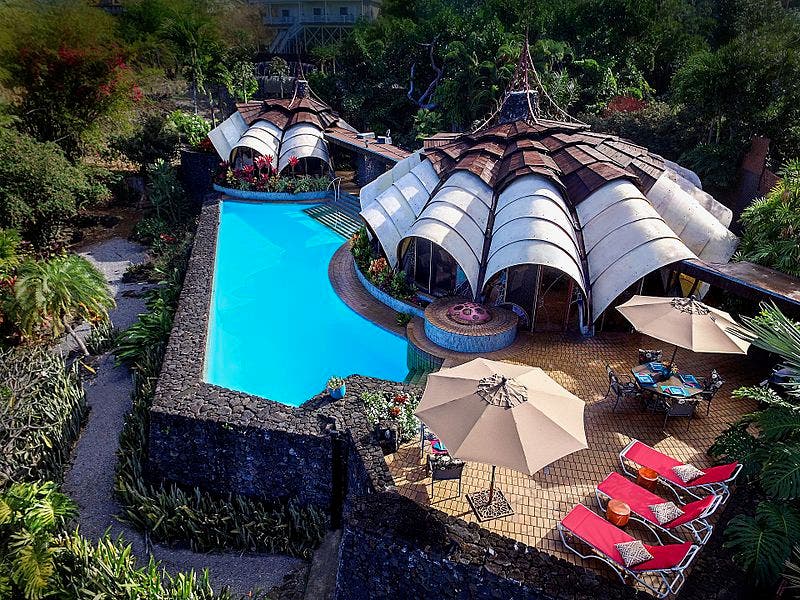
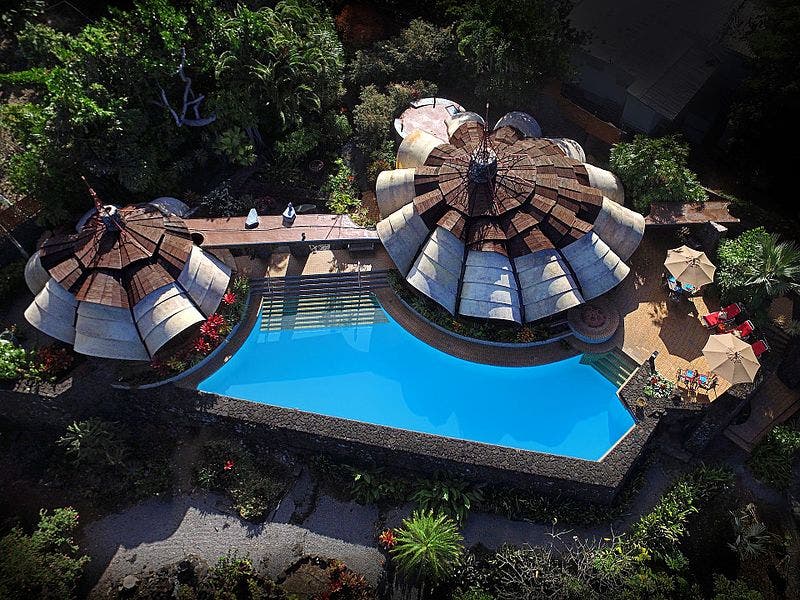
This delicate structure was designed and hand-built by Mr. Kellogg in Hawaii.
The buildings includes stained glass and translucent roof panels to allow as much color and light inside as possible — both during the day and during the night. The structures are surrounded by gardens, pools, and fish ponds — and it all rests on a magmatic rock terrace over the Kona Coast.
This is my favorite one on the list.

Why does architecture matter?
Beyond the obvious pleasure and creature comforts these buildings promise, our environments play a big role in shaping our mood and behaviors. We spend most of our time inside buildings, so their effect on our lives is profound.
However, the field that studies the interactions between the human mind and its surroundings, environmental psychology, is still in its infancy. What we do know so far is that the way we design our buildings and cities can affect our well-being and moods, and that certain cells in the hippocampus of our brains react to the geometry and arrangement of the spaces we inhabit. On a more cultural level, architecture is an indirect representation of a culture’s values, ideals, and concepts of beauty. On a personal level, I think we can all easily tell the effect a nice home or space has on our moods.
In the end, there are still many unknowns here — but not the fact that architecture has a direct impact on our lives. In the words of Winston Churchill, as he was addressing the English Architectural Association in 1924:
“There is no doubt whatever about the influence of architecture and structure upon human character and action. We make our buildings and afterwards they make us. They regulate the course of our lives.”






